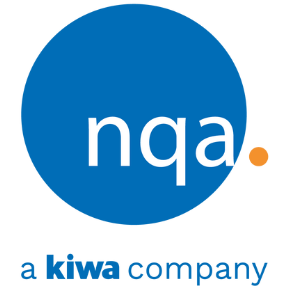Understanding the Difference Between ISO 14001 and OHSAS 18001
On the surface, ISO 14001 and OHSAS 18001 might appear to be nearly identical standards. And because these systems are updated continually, determining what's different in ISO 14001 or OHSAS 18001 in any given publication can be a challenge. Indeed, they're both structurally quite similar, and many of the requirements for receiving 14001 and 18001 certifications are the same. Further, both are used either together or separately by a vast array of industries focused on worker, consumer and environmental safety.
However, although there are many similarities between ISO 14001 and OHSAS 18001, there are two areas where the standards are distinctly different.
Type Of Analysis — Hazard/Risk Vs. Aspect/Impact
A safety management system that conforms to 18001:2007 requires an organization to conduct a hazard/risk analysis (14001:2004 requires an aspect/impact analysis) and to determine appropriate controls. Unlike the aspect/impact analysis, the 18001 standard requires risk reduction considerations according to a 5 step hierarchy:
- Elimination: Elimination is the physical removal of the hazard so that it no longer poses a danger to employees. For example, if you knew a particular ingredient was causing health problems in your workers, you should try to stop using that ingredient altogether in your products and processes. As the top component in the hierarchy, this option should be the first line of defense when possible.
- Substitution: Substitution is the second most effective method of risk reduction. In this option, the hazard is replaced by a similar product that does not produce a risk — such as switching out a dangerous chemical for a healthier one with similar characteristics.
- Engineering controls: Rather than removing the hazards altogether, engineering controls isolate people from the risks. For example, rather than counting on workers to wear protective face gear to keep from breathing in dangerous fumes, you could install building ventilation systems.
- Signage/warnings and/or administrative controls: Audio or visual warnings — such as lights, signs and barriers — may be used to keep people away from a particular risk. However, their effectiveness depends on human understanding, which is prone to error. Likewise, you can use administrative controls like employee training and procedural changes to alter the way people work.
- Personal protective equipment (PPE): PPE includes hard hats, masks, gloves, safety goggles, non-slip footwear and any other equipment an employee might need to stay safe on the job. This option is the least efficient when it's used on its own since its effectiveness relies heavily on fitting, training, maintenance and numerous other factors.
Many organizations manage their risk only by requiring their workers to use personal protective equipment. However, it is important to understand that the intent of OHSAS 18001 is to reduce risks utilizing the highest measure in the hierarchy where possible and not to simply use PPE in all cases. Perhaps a combination of engineering controls and PPE would be warranted. In each risk reduction analysis, careful consideration should be given to the best option available to the organization.
Health And Safety Management System Participation
A second major difference between the ISO 14001 requirements and the OHSAS 18001 requirements is the need for organizations to ensure employee participation in specific areas of the management system. As part of its goal to protect workers from occupational hazards, OHSAS 18001 standards mandate worker involvement. This involvement should include participation in the hazard/risk and determining controls process, incident investigations, and development and review of policies and objectives.
In addition, employees (workers) must be consulted on any changes that affect their occupational health and safety (OH&S) as well as representation on OH&S matters. Additionally, consultation with contractors is required where changes that affect their OH&S. And finally, it is important to note that the standard points out that the OH&S belongs to the workers and/or the contractors.
Effective employee participation requires an occupational health and safety management system (OH&SMS) to be put into place. An OH&SMS comprises numerous policies, procedures and plans that determine best practices for your company's OH&S management. Because each business is unique, you should tailor these plans to your specifications. However, you'll find a general framework and guidelines within OHSAS 18001 requirements that will help you manage your OH&SMS and stay compliant.
Overall, you'll notice a difference in focus between 14001 and 18001 standards. The ISO 14001 concentrates on managing a company's external environment for regulatory compliance and reduced pollution. In contrast, the OHSAS 18001 strives to ensure safety internally in the workplace by getting both workers and management involved in risk reduction. While the intent of each differs slightly, both an internal and external focus are essential for maintaining a healthy, compliant organization.
Contact Us
If your business is looking to implement ISO 14001 or OHSAS 18001, NQA can help. We offer years of experience providing companies worldwide with ISO and other regulatory certifications. We commit ourselves to helping customers understand each certification requirement and industry regulation. With this understanding, you'll be better able to implement the best management system strategies.
Ready to get started? Get a free quote or give us a call at (800) 649-5289 to discuss your certification requirements. For any questions concerning ISO 14001 or OHSAS 18001, contact NQA’s EH&S Business Unit Manager at (978) 635-9256.
